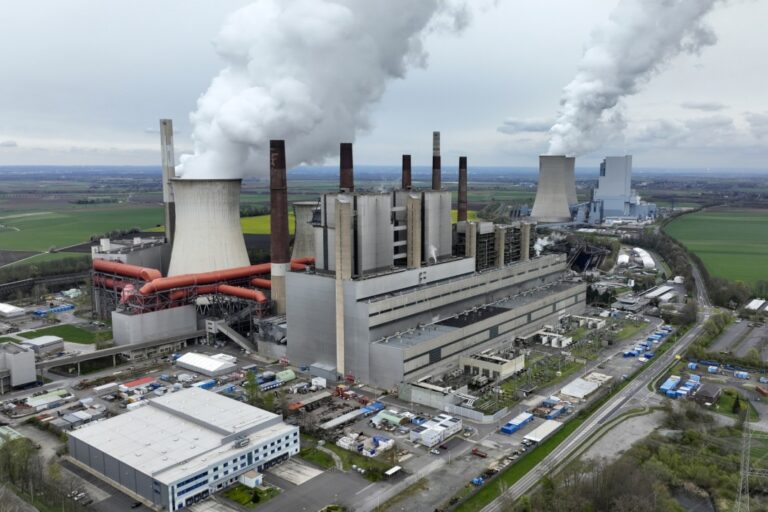
Maintaining optimal cooling in a power station is a critical factor in ensuring efficient power generation. Cooling systems directly affect plant efficiency, power output, and the longevity of equipment. This article explores how effective cooling strategies improve the performance of power stations, the technologies involved, and their impact on operational success.
The Importance of Cooling in Power Stations
Power stations generate substantial heat during operation, especially in systems like steam turbines, electric generators, and gas turbines. If this heat is not properly managed, it can lead to reduced thermal efficiency, equipment failures, and a significant drop in overall performance.
By keeping the system cool, we can ensure the equipment operates within safe temperature ranges, optimizing its function and improving plant operations.
Key Cooling Systems in Power Stations
1. Air Cooling Systems
Air cooling is a popular method where ambient air is used to remove heat from equipment. In power stations, large air-cooled condensers are often employed to regulate temperatures.
- Advantages: Low water usage and environmentally friendly.
- Challenges: Reduced efficiency during high ambient air temperature.
2. Cooling Towers
Cooling towers are essential components in many power stations, designed to dissipate excess heat through evaporation. They are particularly effective in reducing the temperature of cooling water used in heat exchange processes.
- How it Works: Hot water is sprayed over surfaces, and air circulation cools it down before being recirculated.
- Impact on Plant Efficiency: Cooling towers enhance the efficiency of cycles power, maintaining consistent performance even under varying load conditions.
3. Recirculating Systems
These systems reuse water in a closed-loop cycle, preventing wastage and maintaining efficient temperature control. By incorporating heat exchangers, recirculating systems ensure that the water temperature remains optimal for plant operations
Impact of Temperature Control on Plant Efficiency
1. Thermal Efficiency
Thermal efficiency, which measures how effectively a power plant converts fuel into usable energy, is heavily influenced by temperature management. Higher operating temperatures can decrease efficiency, while optimal cooling keeps the system within its peak performance range.
2. Power Output
Proper cooling directly correlates with higher power output. Inadequate cooling can result in overheating, forcing the plant to reduce operations to prevent damage. By maintaining ideal conditions, plants can operate continuously and at maximum capacity.
3. Longevity of Equipment
Overheating causes wear and tear on critical components like turbines and electric generators, shortening their operational life. Effective cooling not only prevents such damage but also reduces maintenance costs and downtime.
Real-Time Monitoring for Cooling Efficiency
Modern power stations employ real-time monitoring systems to track temperature fluctuations and optimize cooling processes dynamically. Sensors embedded in key components provide immediate feedback, enabling adjustments to prevent overheating or inefficiencies.
Challenges in Cooling Power Stations
1. Ambient Air Temperature
High ambient air temperature can hinder cooling efficiency, particularly in air cooling systems. Seasonal variations and geographic location play significant roles in determining the effectiveness of cooling solutions.
2. Water Resource Availability
In areas with limited water resources, the use of cooling water becomes a challenge. Innovative solutions like dry cooling systems are being developed to address this issue.
3. Environmental Regulations
Strict environmental guidelines often limit the discharge of heated water or the use of natural resources for cooling purposes. Power stations must adopt environmentally friendly technologies to comply with these regulations.
Innovations in Cooling Technology
1. Advanced Heat Exchangers
The development of more efficient heat exchangers has revolutionized cooling systems. These devices enhance heat transfer rates, ensuring better thermal management without excessive resource usage.
2. Hybrid Cooling Systems
Hybrid systems combine the benefits of air cooling and cooling water, offering flexibility and enhanced efficiency. They adapt to environmental conditions, making them a sustainable choice for modern power plants.
3. Renewable Energy Integration
Cooling systems powered by renewable energy, such as solar or wind, reduce the dependency on fossil fuels and minimize the environmental impact of power generation.
Future of Cooling in Power Stations
As the demand for energy increases, so does the need for efficient cooling systems. Future innovations aim to address challenges like water scarcity and environmental impact while enhancing thermal efficiency. Advanced materials, AI-driven control systems, and renewable integration will shape the next generation of cooling solutions.
Conclusion
In answer to the question, “Does keeping power station cool improve performance?”, the answer is a resounding yes. Proper cooling ensures optimal plant efficiency, higher power output, and prolonged equipment life, making it an indispensable part of power station operations. By investing in advanced cooling technologies and sustainable practices, power plants can achieve greater reliability, efficiency, and environmental compliance.